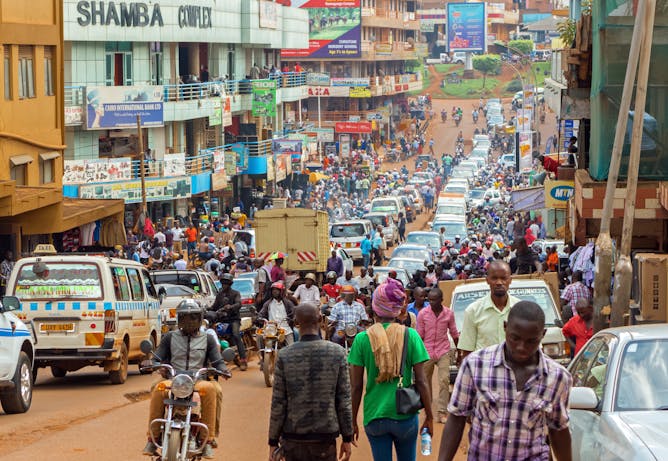|
Kampala, the capital of Uganda, was originally planned for a population of 150,000 people. Today it spans an area including several surrounding districts and there are about four million people working in the city itself. In this way it’s similar to other cities around the world that have grown beyond their administrative boundaries and now face major challenges because local government jurisdictions don’t coincide with the boundaries of the economic region. Astrid R.N. Haas and Enid Slack explain what the Ugandan city could do to alleviate these issues.
|

Kampala experiences heavy traffic in the city due to rapid population growth.
Shutterstock
Astrid R.N. Haas, International Growth Centre; Enid Slack, University of Toronto
Metropolitan areas are key to economic prosperity of countries. But this is affected when the population grows too fast like in Uganda’s Kampala, where growth has outpaced infrastructure development.
|
Business + Economy
|
-
Kenneth Anderson Taylor, Texas A&M University
The people leading nonprofits are much less diverse than the communities they serve and there's no reason to expect that to change soon.
|
|
Politics + Society
|
-
Tony Walker, La Trobe University
From an Australian perspective, shifting power in the Indo-Pacific will be of primary importance in 2018 and beyond.
-
Jaruwat Kiatiwongse, Bangkok University; Rosalia Sciortino, Mahidol University
Southeast Asian countires have a goal to integrate their higher education network to give young generations a truly regional experience. Is it possible?
-
John J Stremlau, University of the Witwatersrand
The Trump administration's incompetence makes it difficult for African countries to engage Washington in seeking meaningful explanations, much less substantive negotiations.
-
Arvind Magesan, University of Calgary
U.S. President Donald Trump and his apologists might be surprised what the economic data says about immigrants who come to Canada from the so-called “shithole” countries.
-
Admir Skodo, Lund University
Donald Trump wants the US to take more immigrants from 'countries like Norway'. But how do 'countries like Norway' treat their own immigrants?
|
|
Science + Technology
|
-
Duane W. Hamacher, Monash University
Four star names from Aboriginal Australia have been recognised by the International Astronomical Union. So what are they and where to find them?
|
|